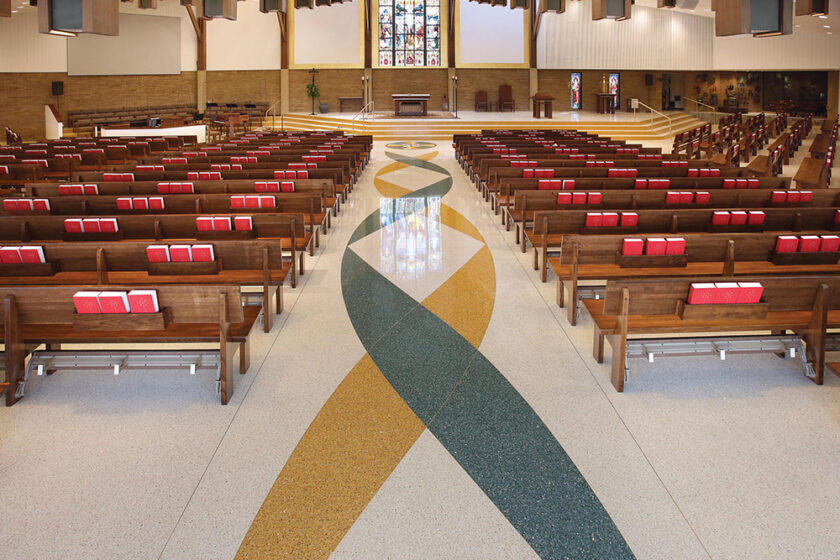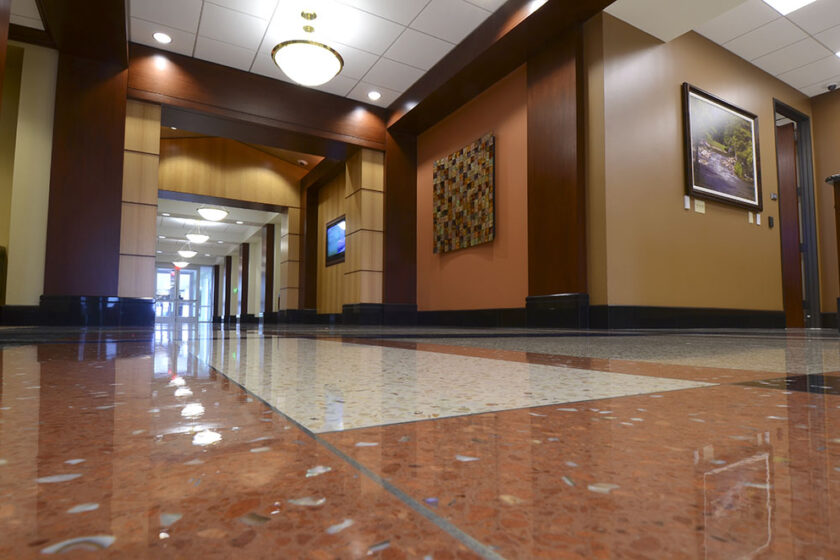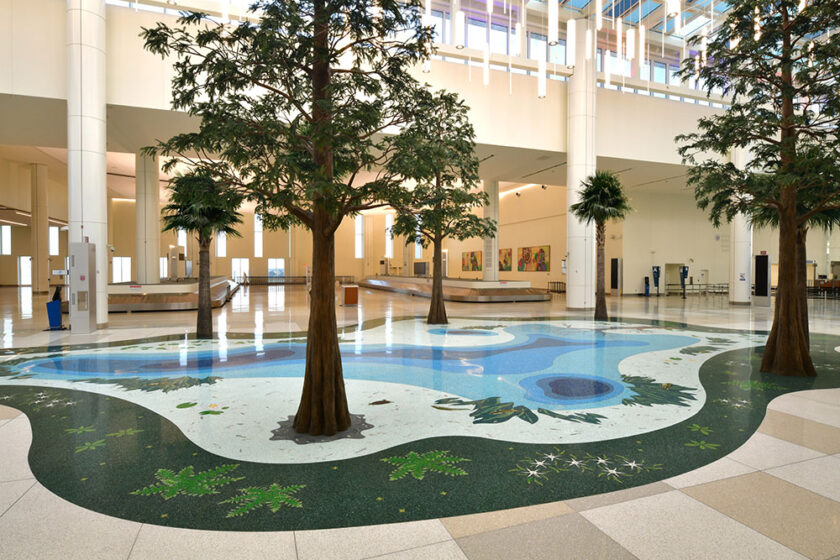Designer’s Dream: Terrazzo Sans Divider Strips
“Can you do our design with no strips?” is the first question an architect generally asks Dan Popovici, owner and CEO of Aragon in Bucharest, Romania.
“Sometimes strips limit the design that architects are looking for,” Popovici explained.
On his projects around the European Union, Popovici reported that designers prefer the strip-free look of traditional Venetian mosaic and terrazzo that they study in architecture school. They are often reluctant to include strips that don’t directly contribute to the intended design.
As technical director of the National Terrazzo & Mosaic Association (NTMA), Gary French confirmed those findings: American designers share that reluctance.
“Designers and architects never want strips in their floor,” French said. It’s a key factor in the compromises of costs, technical demands, and artistic vision that form a project’s final specifications.
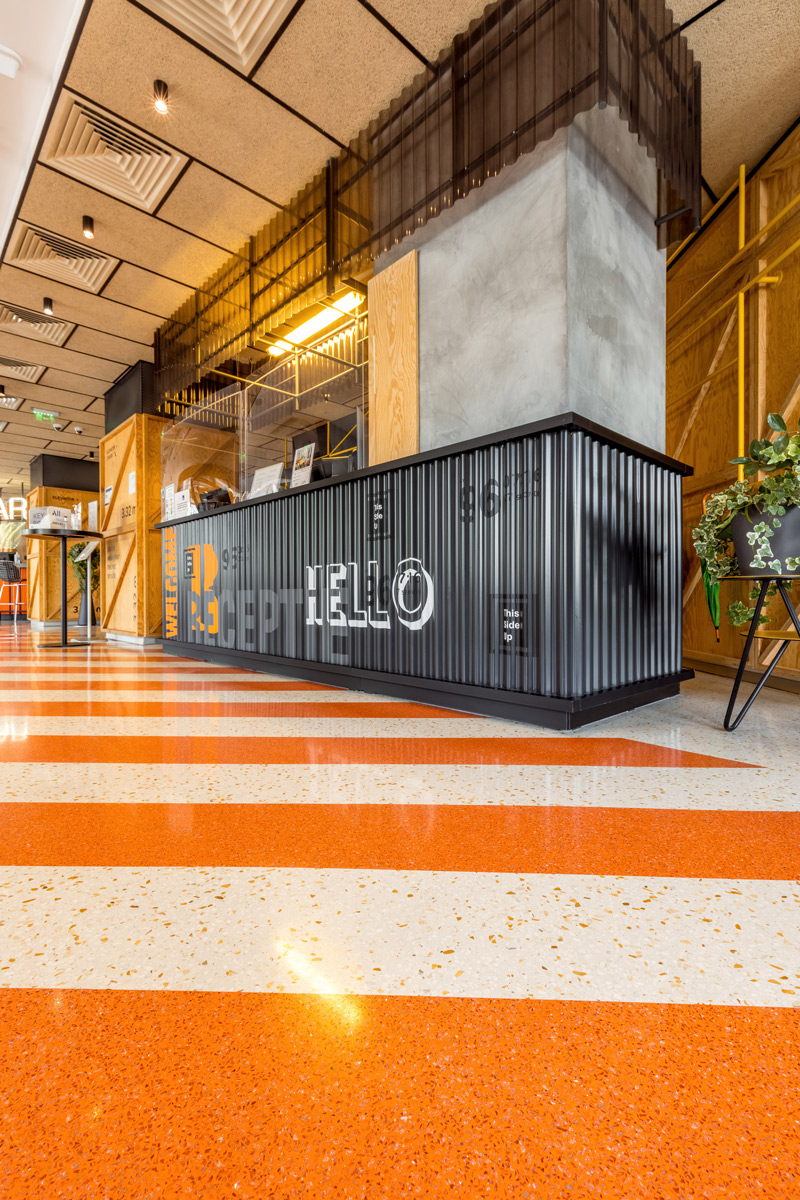
Clean lines
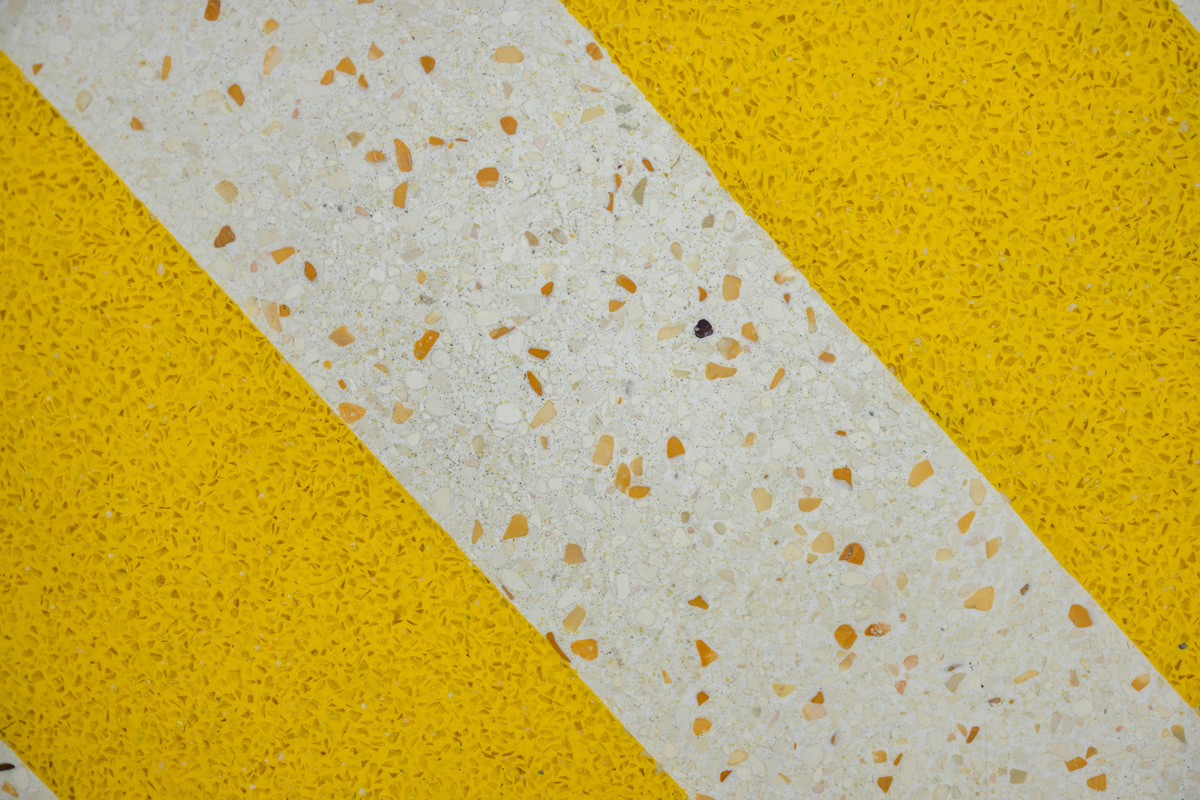
One of Aragon’s recent strip-free installations is a 2022 NTMA Honor Award winner in Bucharest: Hotel Ibis Erbas. The design intent of the newly renovated interior is “in-construction-industrial.” No divider strips were used between the bold epoxy colors; the clean, dramatic lines play a strong role in the aesthetic of the lobby, bar, and restaurant. Divider strips in 0.1-inch aluminum are included only for expansion requirements and delineating main areas.
The colors were poured with temporary plastic strips, one at a time. The following day, craftsmen removed the plastic from the dry section and poured the second color up against it. An advantage of a strip-free installation is that more fluid designs and details can be created on-site, as the plastic strips are more flexible than most permanent ones, Popovici noted.
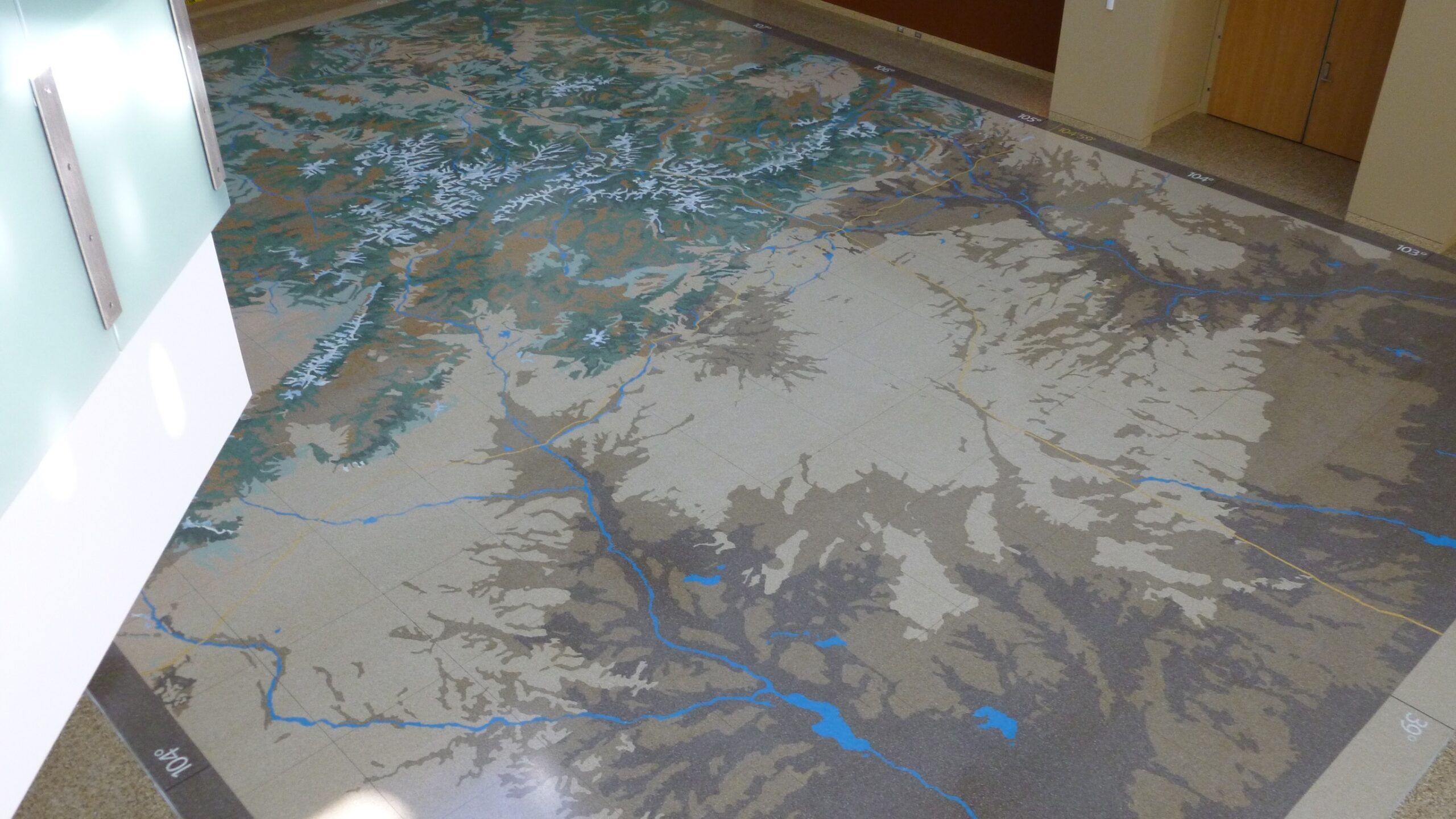
Paint-by-Number Artistry
The 40×60-foot Great Map of Colorado in terrazzo at History Colorado Museum in Denver project followed a paint-by-number process that puts terrazzo in the artist’s hands for any design conceivable. This unique public art project is a literal and to-scale topographical representation of the state, as seen from 400 miles above, on the museum’s lobby floor.
Its artistic medium is epoxy resin in a 14-color palette. The artist, Steven Weitzman, and his team produced by hand 234 individually designed panels, each 36x35x7/16 inches, in his studio. The painstaking three-month pouring process kept the colors distinct without divider strips. The project, reported to have required 9,000 man-hours to install, is the recipient of a 2012 NTMA Special Art Honor Award.
Waterjet-Cut Lines
 A Los Angeles penthouse’s vibrant terrazzo floor centers on an intricate five-color terrazzo medallion depicting an ancient Sri Lankan carved moonstone, a feature of Buddhist structures throughout history. The full-circle moonstone was created without divider strips. Terrazzo installers produced panels of terrazzo in-shop and waterjet cut them into shapes, which were laid out on the job site over a full-sized paper template. Terrazzo was then poured around the precast patterns. The project was recognized with a 2018 NTMA Honor Award.
A Los Angeles penthouse’s vibrant terrazzo floor centers on an intricate five-color terrazzo medallion depicting an ancient Sri Lankan carved moonstone, a feature of Buddhist structures throughout history. The full-circle moonstone was created without divider strips. Terrazzo installers produced panels of terrazzo in-shop and waterjet cut them into shapes, which were laid out on the job site over a full-sized paper template. Terrazzo was then poured around the precast patterns. The project was recognized with a 2018 NTMA Honor Award.
Blurred Lines
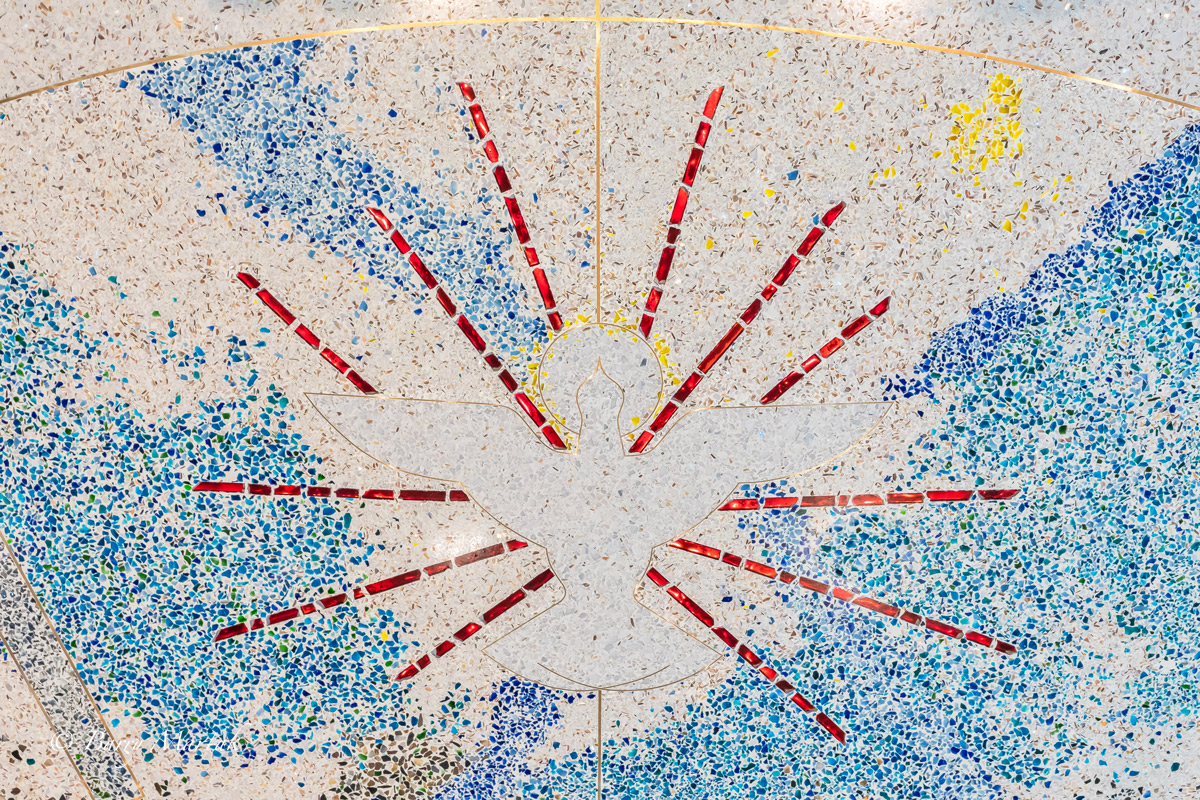 A proprietary method for pouring the terrazzo without any strips and distributing 25 different aggregate chips by hand was developed for a project at St. Ambrose Catholic Church in Salt Lake City. The renovation won a 2019 NTMA Honor Award and a 2018 International Interior Design Association Intermountain Chapter BEST Award. Terrazzo provided the freedom of colors, textures, and forms that the architect was intent upon for the space around the baptismal font, and a floor that brings the right complementary response to the commanding stained-glass windows.
A proprietary method for pouring the terrazzo without any strips and distributing 25 different aggregate chips by hand was developed for a project at St. Ambrose Catholic Church in Salt Lake City. The renovation won a 2019 NTMA Honor Award and a 2018 International Interior Design Association Intermountain Chapter BEST Award. Terrazzo provided the freedom of colors, textures, and forms that the architect was intent upon for the space around the baptismal font, and a floor that brings the right complementary response to the commanding stained-glass windows.
Floors at San Diego International Airport in two different terminals feature a gradient of terrazzo colors poured without divider strips. The colors were hand-seeded and the line between each color was blended for a fluid transition to evoke beach sand washed over with waves. The only use of divider strips was back-to-back control joint strips at every column line and cold pour.
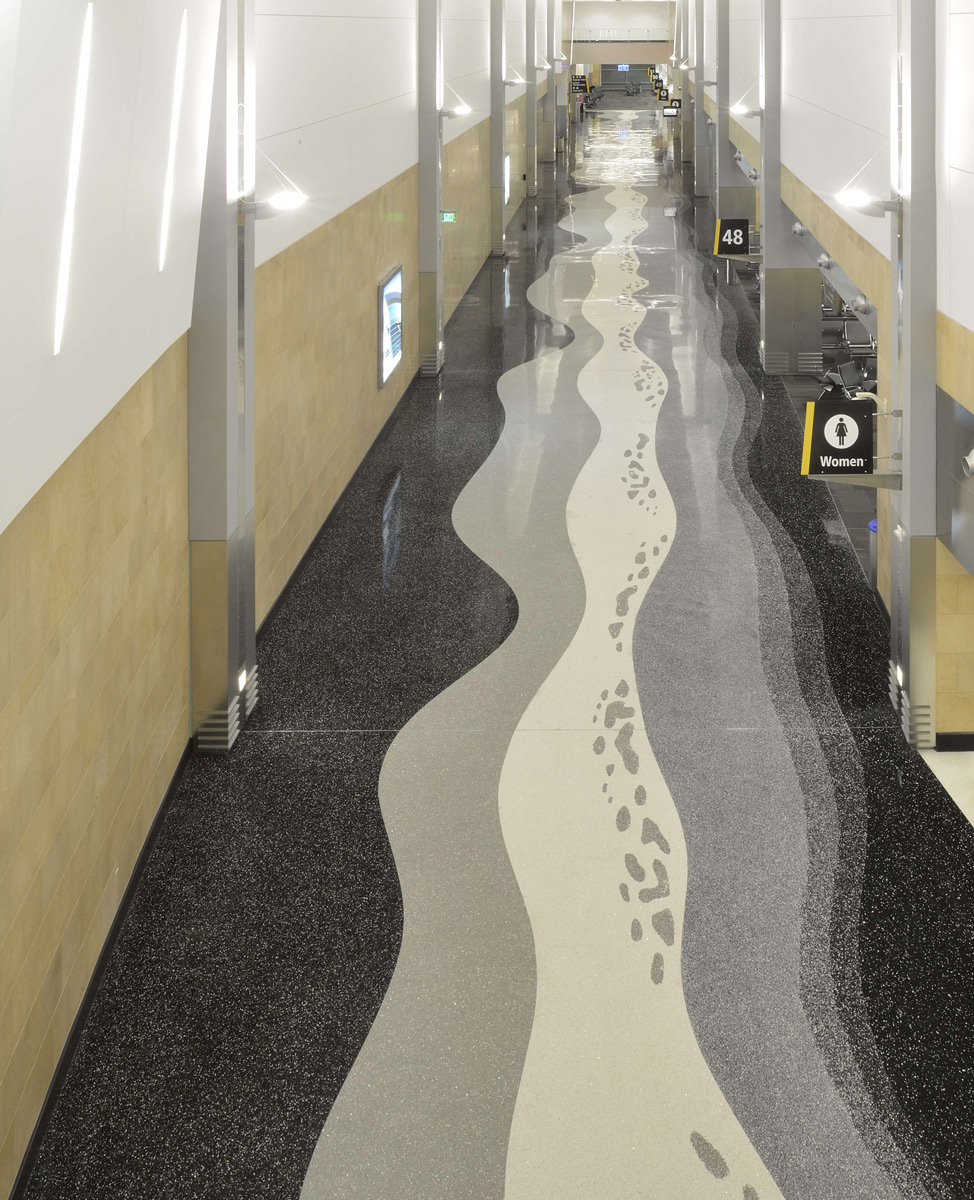
San Diego Airport
No Strips? Why Not?
While freedom from the constraints of divider strips may fulfill a designer’s highest hopes, skipping strips can have its drawbacks. Installing terrazzo without strips is labor- and time-intensive and requires a higher level of skill, thus a more costly installation.
“There is a strict procedure to be done to reach a perfect border between different colors,” Popovici noted.




